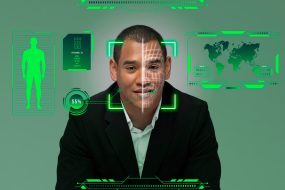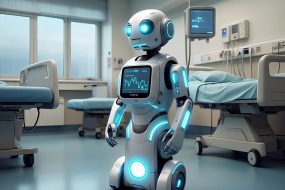
How AI is Transforming Home Automation: Exploring Smart Homes and Enhanced Living
The concept of a “smart home” has evolved dramatically, moving beyond simple remote-controlled lights to interconnected ecosystems powered by artificial intelligence. AI is the driving force behind this transformation, enabling homes to learn our habits, anticipate our needs, and enhance both convenience and security in unprecedented ways. This blog post dives into the exciting world of AI-powered home automation, exploring its benefits and demonstrating how it’s reshaping modern living.
AI: The Brains Behind the Smart Home
At the heart of the smart home revolution lies artificial intelligence. AI algorithms analyze data from various connected devices, identify patterns, and automate tasks based on learned behaviors and preferences. This goes far beyond simply scheduling lights to turn on and off; AI enables proactive adjustments based on real-time conditions and anticipated needs.
Types of AI Tools Powering Smart Homes:
-
Natural Language Processing (NLP):
This allows you to interact with your home using voice commands. Think of virtual assistants like Amazon Alexa or Google Assistant. They understand your requests and translate them into actions, controlling devices, providing information, and even managing your schedule.
Using NLP:
Simply address your virtual assistant (e.g., “Alexa,” or “Hey Google”) followed by your command (e.g., “Turn on the living room lights,” or “Set a reminder for my dentist appointment”).
Benefits:
Hands-free control, simplified interaction, accessibility for users with disabilities.
-
Machine Learning (ML):
ML algorithms learn from data, enabling predictive and adaptive features. For instance, a smart thermostat powered by ML can learn your temperature preferences throughout the day and automatically adjust the climate accordingly, optimizing energy consumption.
Using ML:
Most ML features are embedded within smart devices and operate automatically after an initial learning period. For example, a smart thermostat will learn your preferences over a week or two of usage.
Benefits:
Personalized automation, improved energy efficiency, proactive adjustments based on learned behavior.
-
Computer Vision:
This technology enables devices to “see” and interpret visual information. Security cameras with computer vision can differentiate between a delivery person and a potential intruder, sending alerts only when necessary.
Using Computer Vision:
This is typically integrated into smart security systems. You can configure alerts and sensitivity settings through the accompanying app.
Benefits:
Enhanced security, reduced false alarms, intelligent object recognition.
-
Robotics:
While still in its early stages for home automation, AI-powered robots are becoming increasingly sophisticated. Robot vacuums like the Roomba use AI to map your home and navigate efficiently, while other robotic assistants can perform tasks like folding laundry or delivering items within the home.
Using Robotics:
Robot vacuums typically involve a setup process where they map your home. Other robotic assistants are still emerging and will have their own specific setup procedures.
Benefits:
Automation of household chores, increased efficiency, freeing up time for other activities.
Step-by-Step Guide to Setting Up a Basic AI-Powered Smart Home System:
- Choose a Central Hub: Select a smart home hub like Amazon Echo, Google Nest Hub, or Apple HomePod. This acts as the central control point for your devices.
- Select Compatible Devices: Ensure the devices you choose (smart lights, thermostats, security cameras) are compatible with your chosen hub.
- Connect Devices to the Hub: Follow the manufacturer’s instructions to connect each device to your smart home hub, usually through a Wi-Fi connection.
- Set Up Voice Control (Optional): If your hub supports it, configure voice control using your chosen virtual assistant.
- Customize and Automate: Use the accompanying app to create schedules, routines, and automation rules based on your preferences.
Links to Official Resources:
The Future of AI-Driven Smart Homes:
The future of smart homes is brimming with possibilities. As AI algorithms become more sophisticated, we can expect even greater personalization, proactive assistance, and seamless integration between devices. From anticipating our needs before we even realize them to enhancing our safety and security, AI is transforming our homes into intelligent living spaces that adapt to our unique lifestyles. The journey towards the truly “smart” home is ongoing, but with the rapid advancements in AI, the future looks incredibly promising.













